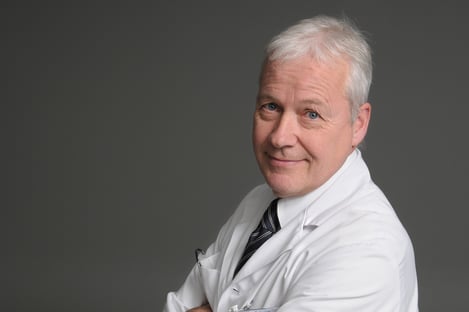Reeve Foundation's Scientific Advisory Board: Armin Curt, M.D.
Join Our Movement
What started as an idea has become a national movement. With your support, we can influence policy and inspire lasting change.
Become an Advocate
A Multi-Modal Approach to Treating SCI
Over the past two decades, scientists have not only begun to learn about the underpinnings of spinal cord physiology, but they’re also beginning to uncover innovative treatments to address functional repair and recovery.
Today, there are a number of options, from epidural stimulation and neuromodulation to medication and human neural stem cell transplantation to treat people with SCI. “But there’s no single intervention that can cure spinal cord injury,” Curt says. Instead, scientists need to take a multi-layered approach that incorporates myriad interventions to affect change.
“Now is the time for well-designed combinatorial trials to address complex barriers and enable neural repair,” Curt says. “We need to come up with smart trial designs that apply different approaches in a timely and coordinated fashion to amplify the effects that we might see with a standalone intervention,” — and that requires collaboration. Fortunately, SCI has a tight-knit scientific community with a vested interest in sharing data and research findings.
“As a clinician, I have very long interactions with patients over the years, and their needs, urgencies and wishes are very close to me,” Curt says. “I see patients who don’t experience major recovery improvements but who still lead impressive lives — and when patients recover function unexpectedly, well, those are always the best days.”
Dr. Curt is part of our newly launched Christopher & Dana Reeve Foundation Scientific Advisory Board. It is comprised of senior and junior investigators from across the globe and in numerous scientific sectors and serves as a sounding board for the Foundation, offering innovative ideas and honest feedback as we search for the most promising research and development opportunities that will provide the greatest impact for community members.
 Armin Curt, M.D., grew up in Cologne, Germany, in a family of four children — with no relation to medicine. His parents ran a small textile manufacturing business, which exposed Curt early on to all sorts of people in myriad professions — a marvelous mixture, he called it. But what drew Curt to medicine was his ailing grandmother.
Armin Curt, M.D., grew up in Cologne, Germany, in a family of four children — with no relation to medicine. His parents ran a small textile manufacturing business, which exposed Curt early on to all sorts of people in myriad professions — a marvelous mixture, he called it. But what drew Curt to medicine was his ailing grandmother.